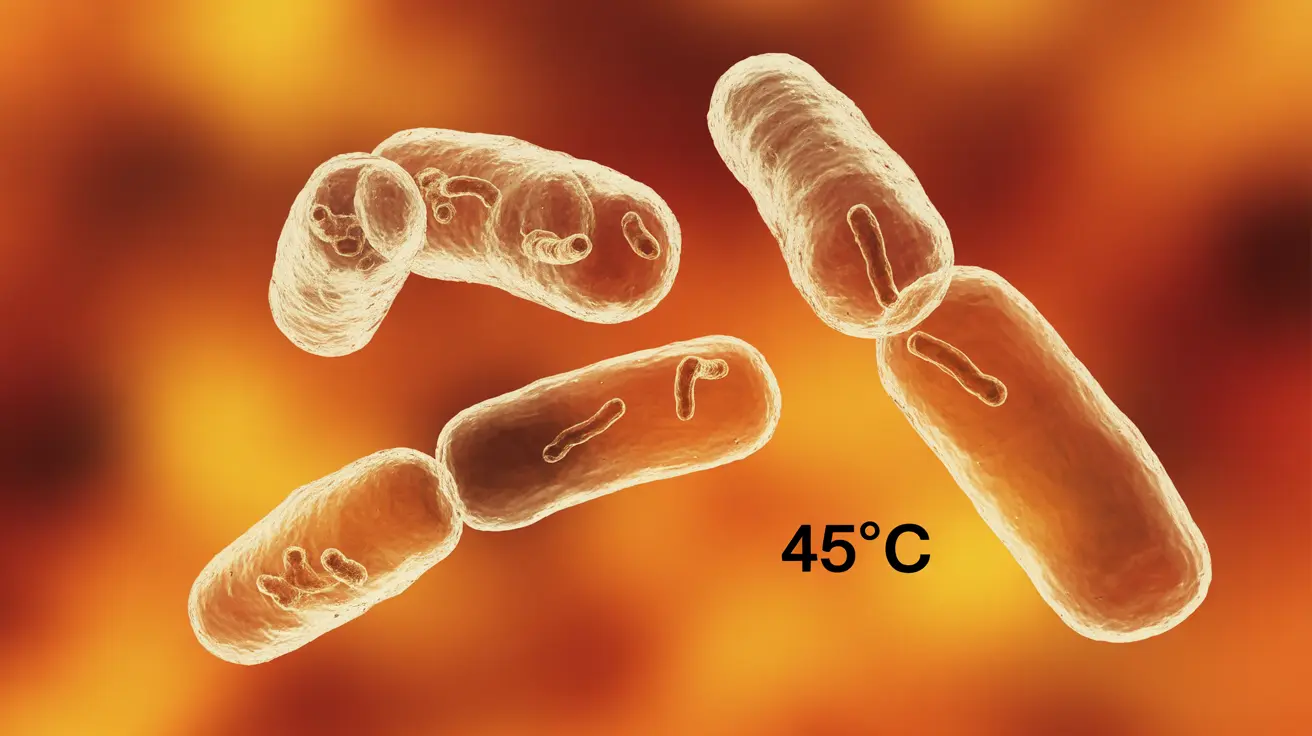Understanding how heat affects bacteria is crucial for maintaining food safety and preventing foodborne illness. While heat is one of our most effective tools for eliminating harmful microorganisms, knowing the right temperatures and timing is essential for ensuring our food and water are truly safe to consume.
The Science Behind Heat and Bacteria
Heat works by destroying the proteins and cellular structures that bacteria need to survive and reproduce. Different bacteria have varying levels of heat resistance, which is why specific temperature guidelines exist for different types of food preparation and sanitization.
Temperature Danger Zone
Bacteria thrive between 40°F and 140°F (4°C to 60°C), commonly known as the "temperature danger zone." Keeping food out of this range is crucial for preventing bacterial growth and ensuring food safety.
Safe Cooking Temperatures for Different Foods
To effectively kill bacteria, foods must reach specific internal temperatures and maintain those temperatures for a sufficient time. Here are the essential temperature guidelines:
- Ground meats: 160°F (71°C)
- Poultry (whole or ground): 165°F (74°C)
- Fish and shellfish: 145°F (63°C)
- Pork and ham: 145°F (63°C)
- Beef, veal, and lamb steaks/roasts: 145°F (63°C)
- Egg dishes: 160°F (71°C)
Water Safety and Boiling Guidelines
When it comes to making water safe for consumption, bringing it to a rolling boil (212°F/100°C at sea level) is the most reliable method. This temperature effectively kills most harmful bacteria, viruses, and parasites that may be present in the water.
Altitude Considerations
At higher altitudes, water boils at lower temperatures, so extending the boiling time is recommended. As a general rule, boil water for at least one minute at sea level, and add one minute for every 1,000 feet above sea level.
Food Storage and Temperature Control
Proper food storage is just as important as correct cooking temperatures. Refrigerate perishable foods promptly and keep your refrigerator at or below 40°F (4°C). Frozen foods should be stored at 0°F (-18°C) or below to prevent bacterial growth.
Alternative Methods for Killing Bacteria
While heat is highly effective, other methods can also help eliminate bacteria in different contexts:
- UV light treatment
- Chemical sanitizers
- Steam cleaning
- Hot water washing (for laundry)
- Dry heat sterilization
Frequently Asked Questions
Does heat really kill bacteria in food and water, and what temperature is needed to be safe? Yes, heat effectively kills bacteria when proper temperatures are reached. Most harmful bacteria are destroyed at temperatures above 165°F (74°C), though specific temperatures vary by food type.
How long should I boil water to make sure it's safe from bacteria and other harmful germs? Bring water to a rolling boil and maintain it for at least 1 minute at sea level, or 3 minutes at high altitudes, to ensure it's safe from harmful microorganisms.
What are the recommended internal cooking temperatures for different foods to kill bacteria like Salmonella and E. coli? Ground meats need to reach 160°F, poultry 165°F, and fish/whole cuts of meat 145°F. Always use a food thermometer to verify temperatures.
Can bacteria survive after cooking if food is left out at room temperature, and how do I store food to keep it safe? Yes, bacteria can regrow if cooked food is left in the temperature danger zone (40-140°F). Refrigerate food within 2 hours of cooking (1 hour if ambient temperature exceeds 90°F).
Besides cooking, what are other effective ways to kill bacteria at home, like in laundry or on surfaces? Effective alternatives include UV light treatment, chemical sanitizers, steam cleaning, hot water washing for laundry (130°F or higher), and proper use of disinfectants on surfaces.




